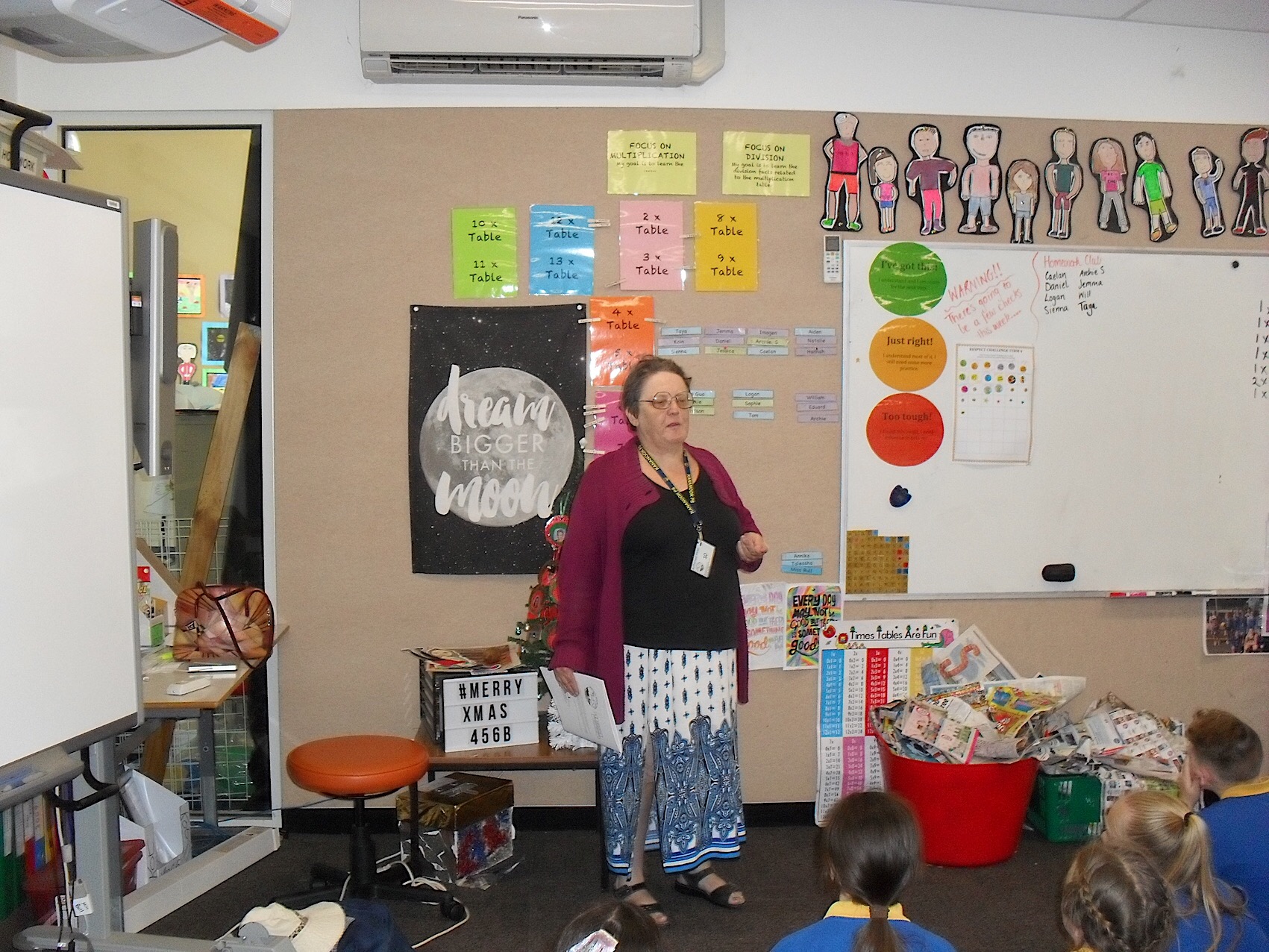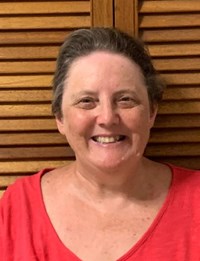Issue 109
Term 2 2019
Developing low-budget literacy programs in schools
As a former teacher librarian, and as an author, Sue Bursztynski has extensive experience engaging young people with reading and literacy. Here, she shares low-budget programs that she has coordinated to help enhance literacy in schools.
Writer in residence
Last year I retired after many years in the library and classroom, and focused mostly on my writing. However, as I was missing my students, I signed up as a volunteer with the Ardoch Foundation. Ardoch is a children’s education charity focused on improving educational outcomes for children and young people in disadvantaged communities. Ardoch delivers tailored education support programs that aim to increase engagement in education, build aspirations, enhance learning outcomes and increase the confidence of over 15,000 vulnerable children each year. One of the programs that Ardoch delivers is Writer in Residence.
Late in the year, I spent five one-hour sessions with Year 4 students and their teacher to produce a book of their work.
I was lucky enough to have assistance from a fellow Ardoch volunteer, a primary school art teacher. As my experience is with secondary students, she was able to bring her wisdom to the task and see how my ideas might work best with younger children.
To give us some idea of their skills, we introduced ourselves and got the students to begin their stories using some writing prompts they had suggested. We wanted to know what they could do, and adapt our process if we had to.
Then they continued with their stories, after making it clear that this was what they wanted, not writing exercises. I went around the classroom, praising, suggesting, and loosening their writer’s block. I took home photocopies of the stories to type up. Next, I printed out the stories, with gentle editing suggestions. We asked those who were finished to edit their work, and to swap stories to help each other. They drew self-portraits for the book in class time.
There were, as always, a few who were never going to finish the stories they had started so enthusiastically. I offered them instead the option of writing an acrostic poem, or an autobiography using a template I had created. Everyone can answer questions about themselves! One student took me up on it this time, and I put together his answers in a paragraph.
The students finished their works of genius, and nominated and voted on a title for the book.
We asked the class teacher for the class’s best artists to do the cover. Three children produced a wonderful cover together.
The others illustrated their own stories and poems with colourful, joyous art, supervised by my colleague.

Sue worked with students to create a book of their work, featuring poems, autobiographies, drawings, and more.
We had intended to take the class to the local library to present a copy of the book, but the school timetable changed. Instead, we had a book launch, complete with drinks and nibbles, supplied by Ardoch. The joy and excitement as the newly published authors were presented with their books made everything worthwhile.
I asked, ‘So, who had fun?’, and every hand shot up. That was all I wanted. That was my first writer in residence gig; hopefully, not my last.
Not everyone can have a writing workshop at school, but there are other options if your school isn’t an Ardoch school and you still can’t afford it. All of the following things I did as a teacher and the sole teacher librarian at a disadvantaged school with a tiny budget. All of them are cheap or free.
100 Story Building
The 100 Story Building in Footscray, Victoria conducts workshops and produces an annual anthology, edited by children. If your school’s Index of Community Socio-Educational Advantage value is 1,000 or below, it’s free. Most schools take students there, but the building offered writing workshops in our EAL classrooms. The Brimbank Writers Festival paid for the students’ poems to be published in a booklet, which was subsequently launched.
Author visits
Not all schools can afford author visits — mine was one of them. But, as a teacher librarian, I found ways to give our students a little of what other schools had. I did book launches, mostly of my own work, and asked author friends to come and launch them. Twice, my publishers came along, paid for the nibbles, and handed out posters and bookmarks. I always made sure that the local newspapers were informed. Any guests were fed a decent lunch and given small thank you gifts. If you aren’t an author with friends like mine, you can offer launches to small presses, who are happy to oblige.

As both an author and a former teacher librarian, Sue is passionate about engaging students with reading and writing.
Once, the YABBA (Young Australians Best Book Awards) folk invited members to apply for an author visit, as they had some money set aside. The deal was that you took whichever author was offered to you. We had Sherryl Clarke. I bought some of her books beforehand, and got some kids to read them so they could ask questions. Afterwards, there were students rushing to the desk to ask for her books. YABBA costs about $50 a year, and allows students to nominate and vote for their favourite books for the YABBA awards later in the year. You can take them to the awards too, for free. Authors sign books and posters afterwards and YABBA supplies booklets with space for autographs.
Literary events
There are other ways to introduce children to authors, such as writers festivals. Tickets usually aren’t too expensive and your students can take votes on who to see. It’s also worth getting the Dymocks e-newsletter. Sometimes big name authors are in town and speak at their shops. I once took a few young fans to hear a favourite fantasy writer.
Premier’s Reading Challenge
Another free option for a teacher librarian is the Premier’s Reading Challenge. I only did it once, in my last year, realised how easy it was and wished I had done it before. Reader’s Cup is perhaps too much for a sole teacher librarian who also has to take classes, but Reading Challenge? Once you get it set up the kids do most of the work, and the posters, bookmarks, and certificates are gorgeous! I got an extra freebie out of that when it turned out that the local member of parliament was keen on Reading Challenge and offered to give our kids a talk about it. They asked questions without prompting. Apparently, there is a book club at state parliament — who would have thought?
Inside a Dog website
Recently, I attended the launch of the State Library of Victoria’s new Inside a Dog website, created by author Lili Wilkinson, who worked for the library’s Centre for Youth Literature at the time. The site is designed by teenagers. It’s user-friendly — and it’s free. It contains news about events and competitions. The members get their own blog pages, where they can review and talk about books, and others can comment. A teen committee reads a long list of books for their annual Inky Awards and turns it into a shortlist, on which kids can vote. Then schools can attend the awards ceremony late in the year, also for free.
The State Library of Victoria also has holiday writing workshops, which are run by well-known authors, and are aimed at low-ICSEA schools. They’re free and the library even supplies public transport cards for kids who don’t have them. It’s also worth signing up for the library newsletter.
Lunchtime clubs
The most cost-effective option of all is to organise a lunchtime book and/or writing club. I did that for several years, right up until my retirement. I let my students dive into bookseller boxes to choose new books, and we got together weekly to talk about what we were reading.
Review blogs
My final suggestion is something that not everyone can do. I publish a personal YA book blog, The Great Raven. I set it up to review new books I could then donate to my library. Guess what? There are authors who are willing to be interviewed online by teens, but I’m not advising anyone to do this using a classroom blog. If an author gives you their time, the least you can do is share their interviews on a publicly available blog. That’s why I said not everyone can do it. However, quite a few librarians do have review blogs.
As both a librarian and classroom teacher, I published students’ author interviews on my blog. In class, it was an option for an activity to follow literature circles. I remember one young man clutching a printout of his published interview for weeks. You do need to be willing to spend time sending email inquiries, lightly editing the questions, and comforting kids who don’t get their favourite author (one popular author passed on my enquiry to her agent, who basically told us to get lost!). It’s so worth it to make students happy, and that’s what we’re here for, isn’t it?
Image credits
Images supplied by Sue Bursztynski. Headshot by David Pearl.
Sue Bursztynski’s first book, Monsters and Creatures of the Night, was published in 1993. She has since gone on to publish many more books, short stories and articles. Her books Wolfborn and You Could Be A Spy are on the Victorian Premier's Reading Challenge list. Find Sue online at Penguin Books Australia.
